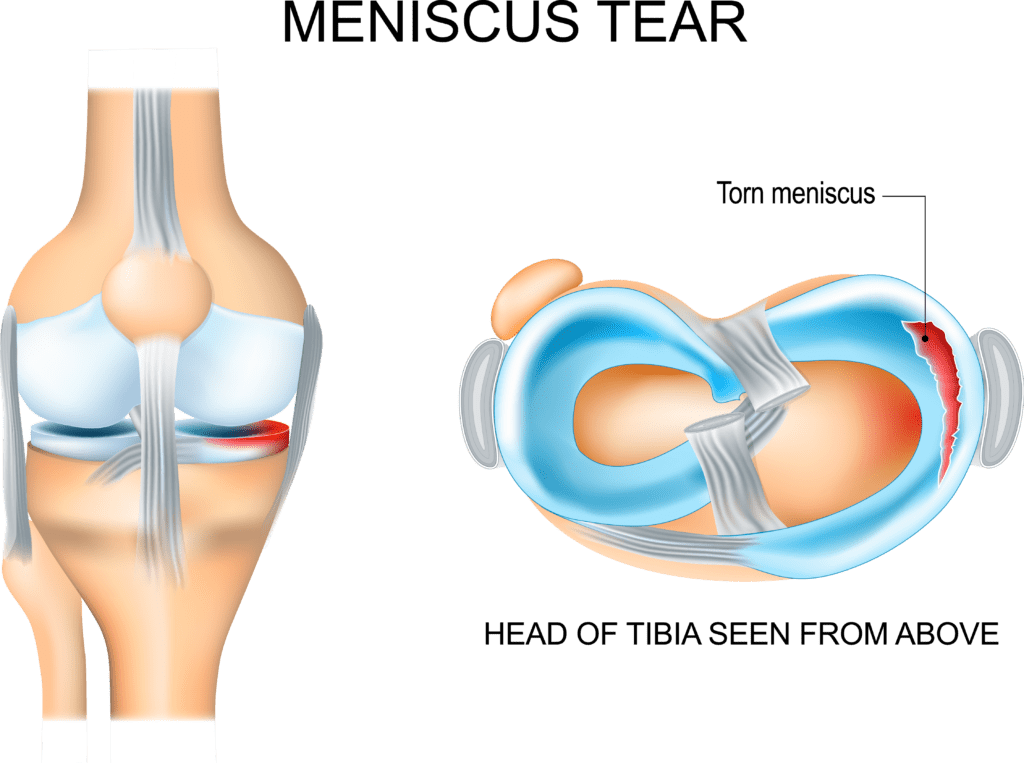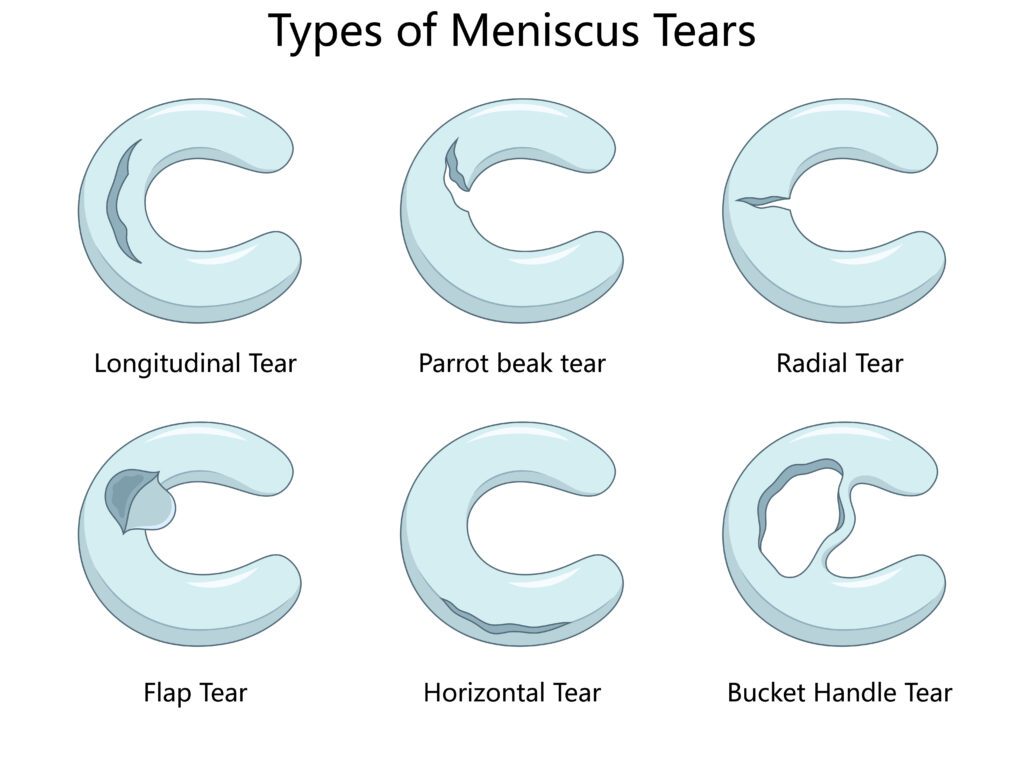What is it?
A meniscus tear is an injury to the cartilage in your knee. The meniscus is a C-shaped piece of cartilage that cushions and stabilises the knee joint between your thighbone (femur) and shinbone (tibia)

Who is at risk?
- Older adults (typically over 40):
- Cartilage becomes thinner and weaker with age.
- Meniscus tears can occur from minimal trauma or even normal movements (degenerative tears).
- Often associated with osteoarthritis.
- Athletes, especially those involved in sports that require:
- Twisting, pivoting, or sudden stops (e.g., soccer, basketball, tennis, football)
- Squatting or lifting (e.g., weightlifting)
- High-impact sports increase the risk of acute traumatic tears.
What are some common symptoms?
- Pain in the knee
- Swelling or stiffness
- Popping sensation at the time of injury
- Difficulty bending or straightening the knee
- Feeling like the knee is “locking” or “giving out”
Causes?
- Twisting or rotating the knee suddenly, often during sports
- Heavy lifting or squatting
- Degeneration due to aging (common in people over 40)
- Trauma or falls (less common but possible)
How is it diagnosed?
- Physical examination
- MRI scan (most common and reliable)
- X-rays (to rule out bone injury)
Do I need surgery?
- Small tears in the outer “red zone” (with good blood supply) may heal without surgery.
- Larger or inner “white zone” tears (poor blood supply) typically do not heal on their own – may require surgery but it is best to consult an orthopaedic surgeon to decide

How long will recovery take?
- Non-surgical: 4–8 weeks with physiotherapy
Surgical:
- Meniscectomy: 4–6 weeks
- Meniscus repair: 3–6 months
What does treatment look like?
Treatment depends on the tear’s location, size, and severity, as well as your age and activity level.
- Rest, Ice, Compression, Elevation (RICE)
- Physical therapy
- Anti-inflammatory medication
Surgical options:
- Arthroscopic meniscus repair (stitching the tear)
- Arthroscopic meniscectomy (removing the damaged part)
How can I prevent this?
Preventing a meniscus tear isn’t always possible—especially with age-related degeneration—but you can significantly reduce your risk by protecting your knees and strengthening the surrounding muscles
Strengthen Your Leg Muscles:
- Focus on quads, hamstrings, and calves to stabilise the knee.
Improve Balance and Flexibility:
- Use balance boards or single-leg exercises to enhance joint stability.
Maintain a Healthy Weight:
- Extra body weight puts more stress on your knee joints, increasing tear risk and slowing healing.
